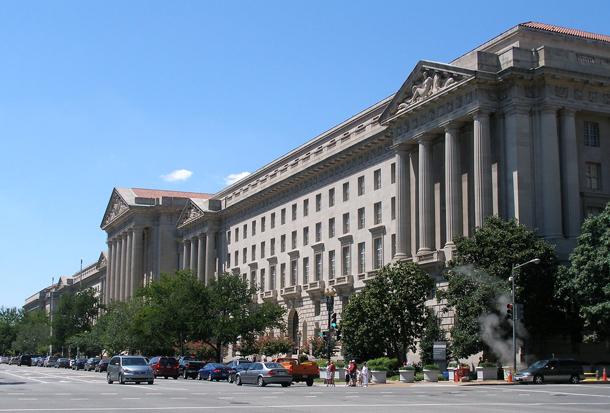U.S. Clean Air Act is back in court
The Environmental Protection Agency Headquarters in Washington D.C. The EPA’s carbon emissions regulations are being challenged in the case The Coalistion for Responsible Regulation vs. EPA. (Photo Courtesy of Wikimedia Commons).
The Clean Air Act was taken to court again last week.
A collection of companies and business groups including coal, oil, steel, cement and agribusiness interests, as well as Republican politicians associated with the Tea Party, took the EPA to court in an effort to get the act’s regulations — at least some of them — invalidated. The case, The Coalition for Responsible Regulation vs. EPA, is challenging both the science behind the Clean Air Act, and how the EPA enforces its regulations.
Back in 2007, the U.S. Supreme Court ruled that carbon dioxide is a climate changing pollutant and the EPA could regulate it under the Clean Air Act. Then, in 2009, the EPA released an “endangerment finding,” which concluded “greenhouse gases … in the atmosphere threaten the public health and welfare of current and future generations.” In 2010, the EPA issued the “tailoring rule,” aiming to protect small businesses from stringent regulations in order to focus their efforts on large greenhouse gas emitters such as refineries and factories.
In an interview with InsideClimate News, Paul Phillips, one of the attorneys representing the coalition, summarized their position.
“The basic thrust of our case is to ask the court to require EPA to accurately and fully weigh and balance the uncertainties and certainties of climate change before imposing regulations that are going to carry an incredible cost without a measurable gain,” Phillips said. “There’s a compelling amount of science and facts out there that suggest man-made climate change is not certain. The EPA needs to accurately and honestly consider those certainties as well as the uncertainties.”
George Washington environmental law professor Robert Glicksman doesn’t believe the petitioners will be successful.
“The courts tend to be very deferential to EPA scientific determinations,” Glicksman said. “I think that the court will uphold the EPA’s conclusion that greenhouse gas emissions are contributing to climate change in ways that present threats to the environment and public health.”
Glicksman believes the coalition has a stronger case against the tailoring rule. The tailoring rule dictates that only facilities emitting more than 100,000 tons of carbon dioxide per year will be subject to tough regulations.
“Essentially what the industry is arguing is that the EPA lacks the digression to decide what the cutoff levels will be,” Glicksman said. “If it’s going to regulate anybody it’s going to regulate everyone. The goal, of course, is … to wind up with the EPA regulating no one. Because if the EPA thinks that regulation of the multiplicity of smaller emitters is not feasible, then the hope on the part of the challengers is that the EPA will essentially throw in the towel and decide not to regulate anybody.”
Whichever way the gavel falls, the rulings will test the strength of the Clean Air Act and the EPA.
“What’s unusual about this case is that the court is holding oral argument over a series of several consecutive days, which indicates that the court regards this as a very complicated set of questions, which are related to one another,” said Glicksman. “If I were to make a wild guess, I’d suspect that we’ll have some answer by some point this summer.”
